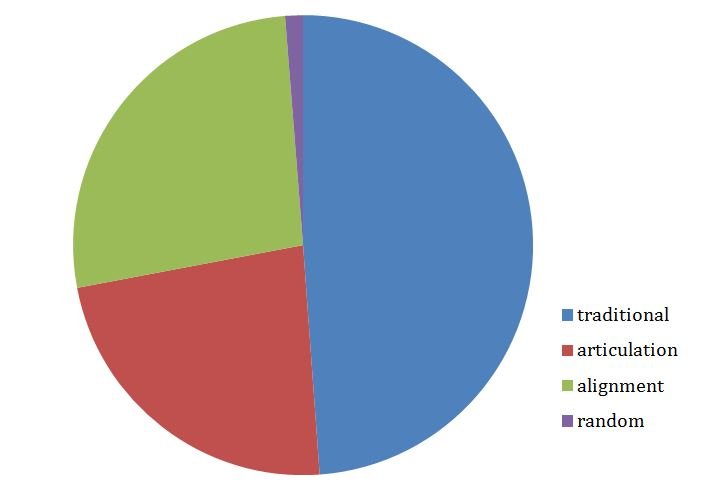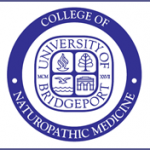A Cornfield for All Seasons: It’s Building Time
David J. Schleich, PhD
I love the W. P. Kinsella story about an Iowa corn farmer who decides that the voices he has been hearing inspired him to build a baseball diamond out in his back 20. The quote from Robinson‘s film of Kinsella’s novel about Shoeless Joe Jackson is often misquoted, though. The line “build it and they will come” is actually “build it and he will come,” referring to Jackson. Not to worry; the metaphor works for us. The whole film is about a man’s quest for reconciliation and about the protagonist’s desire to rekindle a bygone age. As much as we may want to rekindle an era when men and women were attracted to naturopathic medicine for reasons more aligned with personal experience and philosophy than with professional formation goals, we simply have to build a different diamond for the healthcare game in our time. Kinsella and screenwriter-director Phil Robinson attracted lots of attention, including 3 Academy Award nominations. If we borrow the misquoted phrase, though, we may be able to make better sense of the worrying current dip in matriculating naturopathic medicine students this September all around our CNME system in the United States and in Canada. First, though, let’s have a closer look at the stark data.
There is a kind of mini-perfect storm accumulating out there. At the same time as the federal and state governments have let the clutch out on the implementation of the Patient Protection and Affordable Care Act (with the resulting demonstrable increase in demand for primary care providers and affordable, coordinated services), educational programming in the health sciences is mushrooming, although less so in our realm. To explain: no new allopathic medical schools had been established in the 1980s and 1990s. As of February 2013, though, in anticipation of the Affordable Care Act and changing demographics and statistics about chronicity and primary care, the Liaison Committee on Medical Education (LCME) has granted accreditation to 17 new MD/DO schools, bringing the national total in the United States to 141, including the first-ever for-profit Rocky Vista University College of Osteopathic Medicine in Parker, Colorado. Adding to the momentum, the growth in related professional health sciences doctorates in America is breathtaking. For example, the American Association of Colleges of Nursing (AACN) recommended just last year that the Doctor of Nursing Practice (DNP) replace the Master of Science in Nursing as the required degree for training advanced practice nurses (eg, nurse practitioners, clinical nurse specialists, nurse midwives, and nurse anesthetists), with the result that since 2006, 191 new programs have begun. In our smaller, but in relative terms also-transforming world, Bastyr added its San Diego campus, and Maryland University of Integrative Health and Southern California University of Health Sciences have both announced plans to open 2 more, which will bring our program network to 10 in North America, a 42% increase in capacity for our programs, given that in 2006 we had 7 programs operating in total.
Three Million More Students Than in 2012
Into this educational arena, 3 million more students will have matriculated into colleges and universities in America by 2022 than were enrolled in 2012; however, that number represents a much smaller growth rate than we had been accustomed to in the baker’s dozen of years previous to 2012. Digging more deeply into the data, we see not only a huge shift from the 45% growth rate which occurred in college entry between 1997 and 2011, half of which increase occurred in the undergraduate tier, but also a change in the 18-24 demographic itself for that timeframe, from 21% to 13.9%. The likely outcome of all these undulations is that we will have to work harder than ever to draw appropriate candidates to the naturopathic profession. Their first stop: Year I of an increasingly complex and challenging curriculum.
The growth in enrollment, from which cohort we will draw our future profession, was projected to grow by 13.9% between 2012 and 2022 (Table 1). The important markers are those showing full and part-time groups. Among the part-time cohorts on their way to college are many non-traditional students and international students. Within the non-traditional group are many older students for whom convenience and quality are key attractors. In any case, full-time enrollment will grow to 14.6 million students, and part-time to over 9 million. Almost 3.5 million graduate students will be in the hopper by 2022, emerging from a 20.3 million student group in undergraduate programs.
Table 1: Projected Enrollments in US Degree-Granting Institutions, 2012-2022 (in millions)
| 2012 | 2013 | 2016 | 2019 | 2022 | % Change | |
| All students | 20 968 | 21 216 | 22 076 | 23 025 | 23 888 | 13.9% |
| Full-time | 13 104 | 13 107 | 13 532 | 14 068 | 14 616 | 11.5% |
| Part-time | 7953 | 8109 | 8544 | 8957 | 9273 | 16.6% |
| Undergraduate | 18 006 | 18 187 | 18 848 | 19 634 | 20 399 | 13.3% |
| Graduate | 2962 | 3029 | 3228 | 3392 | 3489 | 17.8% |
(Adapted from Lederman, 2014)
Now, these data are one thing. Digital technology, including personal devices and social media, change, cost-benefit, professional opportunity and career return on investment (ROI), learning style, and institutional sustainability, are another, and will compete for our attention too. Our usual way of attracting people to our ND programs will be affected by all of these variables and more besides. For example, more than a half-decade ago Van Der Werf and Sabatler (2009) forecast that just after 2020, minority students will outnumber white Caucasians for the first time. As well, “the average age of students will keep trending higher as… people go back to college again and again to get additional credentials to advance their careers.” (p.5) Further, those same students, especially the non-traditional groups, will seek seamless access to part-time and non-punitive “stop-in/stop-out” privileges in their programs, since many of them will be working professionals. What will their career aspirations, tuition dollar preferences, and content expectations do to our curricula and to our system of training and licensing naturopathic doctors in North America?
Demographic forecasts, predicated on population growth, immigration, and workforce mobility, point to the West and the South (where there will be 9.4% more grads by 2020 than in 2009) as being areas of growth in the half-decade or so ahead. At the same time, the Northeast and Midwest will experience consistent decline, or at the very least, worrying fluctuations. As we contemplate growing the profession in North America, it becomes increasingly apparent, though, that the demographic trends in potential applicant pools may be out of line with the massive growth in patient need in the areas of highest professional formation growth, such as California, the Great Lakes Basin, and the Northeast.
Our naturopathic medical education programs will be out in a marketplace where growth in allopathic health profession education and placement is accelerating, and we will want to carry our message to those who are drawn to it. One extraordinary factor in this dynamic is the escalating transience of social media. In those media we will need to share compelling, inspiring student and graduate stories, as well as patient stories. Stuart Banbery (a marketing manager at SocialSignIn) alerts us to robust trends which we will have to bear in mind. He writes, “Those Universities that produce value-added content, personalized messages and appropriate channels are the ones that will build trust, transparency and tangible relationships with their audiences.” (Banbery, 2015) In the world that Banbery and other media-savvy futurists paint for us, many of the traditional ways we have been recruiting will be dramatically affected by rapid, highly-digitized communications platforms and strategies.
Tap, Tap, Boom, and a Dash of the Old Stuff
Once we find and attract potential students to what we’re doing, they can be fruitfully nurtured by a few dashes of the old ways of introducing prospective students to the profession. An example is open-day or weekend visits in person, where they get to meet our inspired, welcoming students and teachers. As these potential students tap, tap, and boom their way to sending a deposit, they can definitely be helped along with such dashes of the old stuff. Noel-Levitz (2013) reminds us of the value of well-organized campus open-house events, seamless website application, the security of articulation and prerequisite alignment plans, using enrolled students in recruitment/marketing, college-paid trips to campus, and efficient off-campus group meetings for prospective students. (p.12)
However, to get them to our campuses we will have to become increasingly sophisticated in the design and use of customer relationship management (CRM) databases. We will need to be precise in tracking and reporting on student inquiries in order to convert these to applications and matriculation. Potential students will have to find our programs on intuitive and uncluttered home pages with clever navigation bars, engaging visuals (slideshows, virtual tours, multimedia of all kinds), and “calls to action” not only to get accepted and enrolled, but also to do something about the highest chronicity rates on the planet accompanied by the highest costs, exorbitant waste, and suspect approaches to health promotion and patient care.
Potential students will continue to “tap” until a crescendo happens for them which makes sense of a variety of trends, concerns, due-diligence pressures, and planning timelines. Hanover (2014) reports on the most significant markers potential students are watching for, such as a “need for ROI” (p.10) which pays attention to an ND program’s “value proposition,” and “proof of… employment at acceptable salary levels.” Accompanying this aspect of choosing higher education, potential students want to make sure the “value gap” is covered in selecting naturopathic medical education as the career path to follow in terms of personal fulfillment and livelihood. Finally, there will be more non-traditional, older, and transfer students zeroing in on the right program, whose urgency will be accompanied by requests for transparent, current, concise information about what the program expects of them in terms of cost and timing.
Getting the Brand Out There
Given this remarkable environment of demographic trends, expansion of healthcare opportunity, and explosive demand for services, the future for naturopathic medical education can indeed be friendly. Our persistent problems of identity, the efforts of our detractors to limit licensing and to harass our graduates in unlicensed states, and the concomitant challenge of working more closely with professional providers interested in holistic medicine (such as the work of the Academy of Integrative Health and Medicine) can undermine our resolve at times. Even so, we can revisit our assumptions about the energy we give to our traditional recruiting approaches, and evolve them fast. The more we make the 24 million students who will be enrolled in US colleges and universities by 2022 aware of naturopathic medicine as a potential career path, the more likely we will tap into the burgeoning demand for training healthcare professionals and propel a sizeable chunk of that group to natural medicine.
A recent survey I conducted, in collaboration with 10 guidance counselors in community college and 4-year colleges, suggests at least 1 more strategy we could ignite. I asked these counselors which “pathways” to naturopathic medical education would, from their perspective, create the most traction. The combination of “articulation agreement” and “prerequisite alignment” arrangements was forecast in this little survey to attract greater flows of students to our programs than the traditional recruitment methods we have been using (Figure 1). Articulation agreements take time to establish; however, they assure a consistent flow of information to both students and their teachers about the career potential in naturopathic medicine, and the bonus is that they make possible a more seamless process for millennial candidates and non-traditional candidates. Prerequisite alignment agreements make it much simpler for students to access our programs because their prerequisites and co-requisites are lined up in advance. In both cases, a network of college and university career counselors, professors, administrators and students assures a quick response to interest and incubates action.
The AANMC (Association of Accredited Naturopathic Medical Colleges) could handily spearhead a national effort to generate 100 of each of these “agreements” by the end of the decade, resulting in an incremental flow of students to programs all over the continent. The AANMC and the AANP could also ramp up their efforts to promote greater public awareness of naturopathic medicine, not only as a much-needed healthcare workforce tool in a culture where need is outstripping available resources, but also as a way of identifying and proliferating an understanding and excitement about an extraordinary career opportunity.

Figure 1. Recruitment Pathways to Naturopathic Programs
(Survey of 10 college counselors regarding the most effective pathways to naturopathic matriculation; Schleich, April 2016)
Returning to our Iowa cornfield metaphor, perhaps we should alter the phrase even more to: “if you build, market, and sell it really well, they will come” or “build it, nurture it, engage them, and they may come and stay.” The “they” refers to our potential new students. Where they will come to is our naturopathic programs. Where they will end up is strengthening the naturopathic profession at a time of immense opportunity and growing competition. The goal is to build “it” (access to naturopathic medical education) so that a bigger piece of the college enrollment pie heads our way. What we do not want is for our metaphor “build it and they will come” to be a prayer rather than a strategy.
 David J. Schleich, PhD, is president and CEO of the National University of Natural Medicine (NUNM), former president of Truestar Health, and former CEO and president of CCNM, where he served from 1996 to 2003. Previous posts have included appointments as vice president academic of Niagara College, and administrative and teaching positions at St. Lawrence College, Swinburne University (Australia) and the University of Alberta. His academic credentials have been earned from the University of Western Ontario (BA), the University of Alberta (MA), Queen’s University (BEd), and the University of Toronto (PhD).
David J. Schleich, PhD, is president and CEO of the National University of Natural Medicine (NUNM), former president of Truestar Health, and former CEO and president of CCNM, where he served from 1996 to 2003. Previous posts have included appointments as vice president academic of Niagara College, and administrative and teaching positions at St. Lawrence College, Swinburne University (Australia) and the University of Alberta. His academic credentials have been earned from the University of Western Ontario (BA), the University of Alberta (MA), Queen’s University (BEd), and the University of Toronto (PhD).
References
- American Association of Colleges of Nursing. (2012). 2012 Annual Report: Leadership Collaboration Innovation: Advancing Higher Education in Nursing. AACN Web site. http://www.aacn.nche.edu/aacn-publications/annual-reports/AnnualReport12.pdf. Accessed June 1, 2016.
- Banbery, S. (2015). Higher Education Marketing Trends 2016. Linkedin Pulse. Available at: https://www.linkedin.com/pulse/higher-education-marketing-trends-2016-stuart-banbery. Accessed June 1, 2016.
- Hanover Research. (2014). Trends in Higher Education Marketing, Recruitment, and Technology. Available at: http://www.hanoverresearch.com/media/Trends-in-Higher-Education-Marketing-Recruitment-and-Technology-2.pdf. Accessed June 1, 2016.
- Lederman, D. (2014). The Enrollment Slowdown. Inside Higher Ed Web site. https://www.insidehighered.com/news/2014/02/28/us-projects-college-enrollment-grow-14-through-2022. Accessed June 1, 2016.
- Noel-Levitz. (2013). 2013 Marketing and Student Recruitment Practices Benchmark Report for Four-Year and Two-Year Institutions. Coralville, IA: Noel‐Levitz. Available at: http://tinyurl.com/heqfz72. Accessed June 1, 2016.
- Van Der Werf, W. & Sabatler, G. (2009). The College of 2020: Students. Chronicle Research Services. Washington, D.C. Available at: http://www.uwec.edu/CETL/bundles/upload/college2020-dl.pdf. Accessed June 1, 2016.









